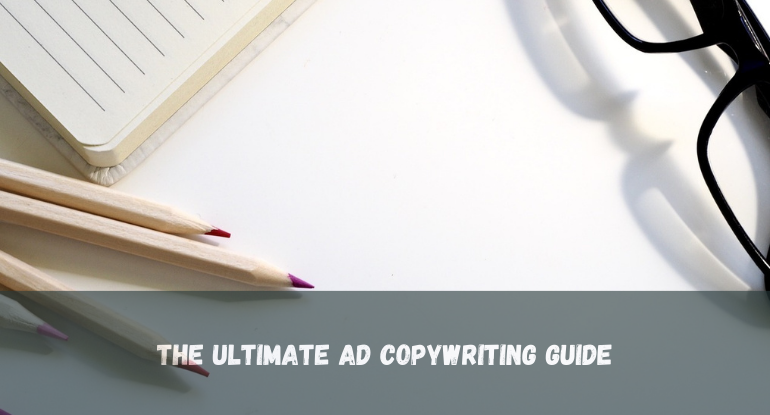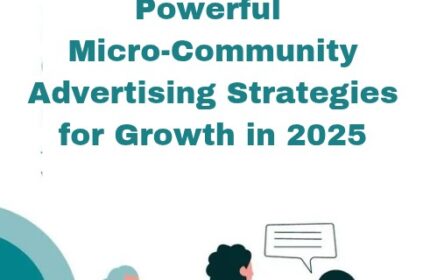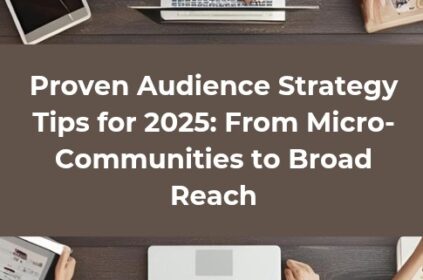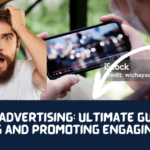Welcome to “The Ultimate Ad Copywriting Guide“. If you’ve ever wondered how to craft words that captivate, persuade, and ultimately drive action, you’re in the right place. In this comprehensive guide, we’re diving deep into the art and science of ad copywriting.
Are you curious about the secrets behind compelling headlines, persuasive hooks, and the psychology of selling through words?
Then you’re about to find out! We’ll equip you with the skills and strategies to create ad copy that not only grabs attention but also converts readers into customers.
Get ready to unlock the power of persuasive language, discover the techniques that top copywriters swear by, and learn how to create ad campaigns that leave a lasting impact.
By the end of this post, you’ll be armed with the tools to write ad copy that makes a real difference for your business. Let’s get started.
How To Craft Ad Copy That Captivates And Persuades?

In this section, we shall follow the Ultimate Formula for Writing Ad Copy. We will guide you through and explain vivid key elements of ad copy sells. Below are the key elements and explanation.
#1. The purpose of ad copy
You have to first of all explain the purpose of your ad copy to be able to persuade your audience to take a specific action, such as clicking, buying, subscribing, etc.
Note that purposes of ad copies are to vary from individual person based on the peculiarity of their demographic needs.
A prospect that is in need of item will always need concise answers about such an item and not just a vogue explanation. So clearly define the purpose of your ad copy in order to achieve your ad campaign goals.
#2. The audience of ad copy
Who are you writing for, what are their pain points and how can you address them in your copy.
You need to identify your audience and have a deep insight into their concerns before you can address them appropriately. Here is where researching about them is very important.
#3. The structure of ad copy
Researching about your audience helps you to gather all the information needed to structure your ad copy into a clear and logical flow, using the AIDA model (Attention, Interest, Desire, Action) or other frameworks.
With this, your ad copy directly addresses interest, attracts attention and commands the action of your audience once their desire is met.
#4. The style of ad copy
Pay attention to the style of your ad copy. The use of language that is clear, concise, and compelling, using techniques such as storytelling, benefits, features, proof, urgency, and calls to action.
Don’t be verbose. Just go straight to point. Once you hit the pain point of your audience, they are totally convinced at once that you have what they want because you understand their problem.
#5. The optimization of ad copy
In order to optimize your ad copy, you need to always test, measure, and improve your ad copy based on performance data and feedback.
You can also provide examples of ad copy that follows the formula and explain why they work. You can use real ads from your industry or niche, or create your own hypothetical ones.
By the end of this section, you should be able to draft as copy that your audience should have a clear understanding of how to write ad copy that sells, and be ready to apply the formula to their own projects.
What Is The Art And Science Behind Ad Copywriting?
Ad Copywriting 101: The Art and Science of Persuasive Language
Ad copywriting is the skill of writing texts that persuade and motivate people to take action, such as buying a product, signing up for a service, or joining a cause. It is a combination of art and science, as it requires creativity, empathy, and knowledge of human psychology, as well as research, analysis, and testing of different messages and strategies.
The art and science of ad copywriting covers the following;
#1. Crafting a compelling headline
Your first task is to create a headline that will pique your audience’s interest. Your title is arguably the most important part of your text. Statistics show that around 80% of people read the text in the headlines, but only 20% read the full text.
#2. Know your target audience
The legendary British advertising executive, David Ogilvy once said that Advertisers who ignore research are as dangerous as generals who ignore deciphering enemy signals.
A copywriter cannot simply trust his instincts. They must take a data-driven approach and have a deep understanding of who their customer is and how the product solves their problems.
When developing content ideas for a website, try to get into your customers’ minds and look at it from their perspective. A useful way to do this is to create buyer personas, or fictional representations of your ideal customers.
Your buyer’s persona should include details like demographic information, geographic location, and career. This will help you to better understand what type of people your product is aimed at, also known as your target audience.
Once you deeply understand your audience, you are better able to tap into their desires, passions, and dreams. This allows you to create texts that directly meet your needs. This includes not only offering them solutions that match their interests and lifestyles, but also using linguistic and cultural references that are familiar to them.
#3. Be truthful to your customer
While it is encouraged that you should be explicit, it is very important to avoid coming across as being too pushy or aggressive. A well-tailored copy speaks to clients as friends who’s problem you want to share, which in turn endears them to the brand to consciously engage it with confidence and trust.
Similarly, promising ad copy is substantial enough on its own to be truthful rather than mislead customers. Therefore, ensure to avoid over-exaggerating product benefits, using false or misleading testimonials, or talking down to your readers. Can you be led by your ad copy? If what your ad copy preaches can’t be practiced by you, don’t put it in public domain for prospects and customers too.
#4. Accentuate value proposition
Unique Value proposition is a short statement that accentuates the values of your products or services to your audience on why they should buy from you rather than from your competitors. Note that this is different from your slogan. Essentially, it’s a unique way to identify and distinguish your offering from the others. Sending such an exceptional message that stands you out to your audience is vital to writing copy that converts.
Basically, unique value propositions are so critical to an ad’s success such that experimental research has proven that they are capable of boosting conversion rates by 10% and over. In formatting your unique value proposition, don’t complicate things trying to explain unnecessary things. Keep your value it short, clear and direct to the point.
Some few examples of great value propositions include:
#1. Facebook: ‘Make the world more open and connected’.
#2. Google: ‘Provide users with the most relevant and useful information in the fastest and most efficient way possible’.
#3. Instagram: ‘Allows people to form connections and collaborations.’
All your marketing materials should include your value proposition, as this helps persuade customers and is also a good practice for establishing your brand identity.
The process wording of this proposition can vary, but you should include some form of it on crucial assets such as online and print ads, landing pages, and the homepage of your website.
#5.Be clear and concise
“Make it simple. Make it memorable. Make it inviting to look at. Make it fun to read.” The above is a quote from Leo Burnett. It serves as a metaphor for how the editing process should be approached. One of the most important principles of good writing is to approach your work objectively and without emotion, keeping it simple and direct.
Clarity and conciseness are the cornerstones of a powerful text. Be ruthless in your edits: avoid using industry terminology that your audience doesn’t necessarily understand or identify with, and remove excess descriptors, adverbs, and nonsense from your copy.
#6.Prioritize benefits over features
A big mistake people make when selling a product is focusing on the product’s features rather than its benefits. Don’t simply describe the product in your copy. Instead, explain what your product can do for customers and how it can better their lives. Then, connect that to the experience of using the product. Contextualize your product’s features by directly tying them to the benefits.
#7. Use the AIDA model
Developed in the late 19th century, the AIDA model is used to describe the steps a customer goes through when purchasing a product. This is a useful formula to consider when you’re trying to get past writer’s block as you create your copy.
#8. Overcome customer objections
Let’s say a potential customer sees your copy and understands your value proposition. Still, they might have concerns: Can they trust your brand? Will your product really be all that it claims to be? Will it arrive on time or at all?
At this point, it’s crucial that you acknowledge and empathize with your reader rather than ignore their gnawing objections. You need to build mutual trust between you and your audience.
One way to do this is by adding a guarantee that will prove to your reader that they can only gain from this deal and has nothing to lose. You can offer free trials, for example, to help seal the deal. Testimonials from happy customers are another effective way to respond to people’s hesitation and assuage their concerns.
What Are The Secrets To Creating Compelling Headlines?
How to Write Headlines that Hook Your Readers and Boost Your Click-Through Rate
Creating compelling headlines is an art and a science that requires creativity, skill, and practice. There are many secrets to writing headlines that hook your readers and boost your click-through rate, but here are some of the most important ones:
#1. Know your target audience and write for them.
Use words and phrases that resonate with their needs, desires, pain points, and emotions. For example, if you are writing for entrepreneurs, you might use words like “grow”, “profit”, “success”, “strategy”, etc.
#2. Use powerful words that evoke curiosity, urgency, emotion, or value.
These are words that make your readers want to know more, act fast, feel something, or get something. For example, some powerful words are “secret”, “ultimate”, “how to”, “guaranteed”, “free”, etc.
#3. Keep your headline short and simple.
Aim for 6 to 12 words, and avoid jargon, acronyms, and complex sentences. A short and simple headline is easier to read, understand, and remember. It also fits better on social media platforms and search engines.
#4. Use numbers and data to make your headline more specific, credible, and appealing.
Numbers and data can catch your readers’ attention and show them that you have something concrete and valuable to offer. For example, you can use statistics, percentages, lists, rankings, etc.
#5. Make a promise and deliver on it.
A good headline should convey a clear message and a clear benefit to your readers. It should tell them what they will learn, achieve, or get from reading your article. It should also match the content of your article and not mislead or disappoint your readers.
These are some of the secrets to creating compelling headlines that can help you attract more readers and grow your audience.
How Does Psychology Play A Role In Selling Through Words?
The Psychology of Ad Copywriting:
How to Use Emotions, Triggers, and Biases to Influence Your Audience.
This is a very interesting topic. Emotions, triggers, and biases are powerful psychological factors that can influence your audience’s behaviour and decision-making. Here are some ways to use them effectively in your copywriting:
#1. Emotions:
Emotions are the feelings that your audience experiences when they interact with your content. They can be positive or negative, and they can affect your audience’s motivation, attention, and memory.
To use emotions in your copywriting, you need to know your audience’s pain points, desires, and goals, and craft messages that appeal to their emotional needs.
For example, you can use emotional triggers such as anticipation, belonging, curiosity, fear of missing out, or hope to capture your audience’s interest and persuade them to take action. You can also use emotional words, stories, images, and testimonials to evoke specific emotions and connect with your audience on a deeper level.
#2. Triggers:
Triggers are the stimuli that activate your audience’s emotions and biases. They can be internal or external, and they can influence your audience’s behavior and decision-making. To use triggers in your copywriting, you need to know what triggers your audience’s emotions and biases, and use them strategically to influence their actions.
For example, you can use triggers such as scarcity, urgency, social proof, authority, or reciprocity to create a sense of urgency, trust, or obligation in your audience and motivate them to act. You can also use triggers such as personalization, humor, or surprise to create a positive impression and build rapport with your audience.
#3. Biases:
Biases are the mental shortcuts that your audience uses to simplify information and make judgments. They can be conscious or unconscious, and they can affect your audience’s perception, attention, and memory.
To use biases in your copywriting, you need to know what biases your audience has and how to overcome or leverage them. For example, you can use biases such as confirmation, anchoring, or framing to influence your audience’s opinions and choices. You can also use biases such as loss aversion, cognitive dissonance, or the but you are free effect to reduce your audience’s resistance and increase their compliance.
Carefully following and implementing this tips will helps you understand how to use emotions, triggers, and biases to influence your audience.
What Skills And Strategies Can You Use To Make Ad Copy Attention-Grabbing And Conversion-Focused?
Here we will take you on a tour to7 Essential Skills and Strategies for Writing Ad Copy that Converts.
Writing ad copy that converts is a skill that can help you reach more customers and grow your business. Here are some essential skills and strategies for writing ad copy that converts, based on the web search results I found:
#1. Research and understand your audience.
Before you write anything, you need to know who you are writing for, what they want, and what motivates them. You can use customer research, surveys, interviews, and analytics to learn more about your target audience and their pain points, goals, and preferences.
#2. Solve a problem for your customer.
Your ad copy should focus on how your product or service can solve a specific problem or fulfill a need for your customer. You should highlight the benefits and value of your offering, not just the features. Use words that evoke emotions and create a sense of urgency.
#3. Ensure your ad copy is concise.
You only have a few seconds to capture your audience’s attention and persuade them to take action. Your ad copy should be clear, simple, and easy to read. Avoid parlance, fuzz, and undue words. Use bullet points, lists, and headings to break up your text and make it more scannable.
#4. Have a clear call to action (CTA).
Your ad copy should start, embody and end with an explicit and compelling CTA that tells your audience what to do next. Your CTA should be specific, actionable, and relevant to your offer. Use verbs that convey urgency and value, such as “buy now”, “sign up”, “learn more”, or “get started”.
#5. Utilize visuals to aid your ad copy.
Visuals can enhance your ad copy and make it more appealing and memorable. You can use images, videos, graphics, or icons to illustrate your message and showcase your product or service. Make sure your visuals are high-quality, relevant, and consistent with your brand identity.
#6. Creatively use emojis.
Emojis can add some personality and flair to your ad copy and make it more engaging and relatable. You can use emojis to express emotions, emphasize key points, or create visual interest. However, you should use emojis sparingly and appropriately, and avoid overusing or misusing them.
#7. Use a consistent brand voice and tone.
Your ad copy should reflect your brand personality and values, and match the tone and style of your other marketing materials. You should use a consistent voice and tone across all your channels and platforms, and tailor it to your audience and purpose. Your voice and tone should be authentic, credible, and trustworthy.
What Are The Essential Techniques Employed By Top Copywriters?

The top 10 essential techniques that every successful copywriter knows and uses are:
#1. Craft a compelling headline.
A headline is the first thing that your reader sees, and it determines whether they will continue reading or not. A good headline should capture your reader’s attention, arouse their curiosity, and communicate your main benefit or promise. You can use various formulas, such as how-to, list, question, or testimonial, to create headlines that hook your reader.
#2. Know your target audience.
To write copy that sells, you need to know who you are writing for and what they want. You should research your audience’s demographics, psychographics, pain points, desires, and goals, and use this information to craft messages that appeal to their needs and interests. You should also use words and phrases that resonate with your audience and reflect your brand voice.
#3. Write from a fresh perspective.
To stand out from the crowd, you need to write copy that is original, creative, and unique. You should avoid using clichés, jargon, or generic statements that can make your copy boring or untrustworthy. Instead, you should use stories, metaphors, analogies, or humor to make your copy more engaging and memorable. You should also try to find a new angle or a surprising twist that can differentiate your copy from your competitors.
#4. Respect the customer.
To write copy that sells, you need to respect your customer’s intelligence, time, and money. You should avoid using hype, exaggeration, or manipulation that can make your copy sound dishonest or desperate. Instead, you should use facts, evidence, and logic to support your claims and persuade your customer. You should also be polite, courteous, and grateful, and show your customer that you care about their satisfaction and success.
#5. Emphasize your value proposition.
A value proposition is the main reason why your customer should buy from you and not from someone else. It is the core of your copy, and it should answer the question: what’s in it for me? To write a strong value proposition, you should focus on the benefits, not the features, of your product or service. You should also highlight your unique selling point, or what makes you different from your competitors. You should also make your value proposition clear, concise, and compelling.
#6. Be clear and concise.
To write copy that sells, you need to write copy that is easy to read and understand. You should avoid using long, complex, or ambiguous sentences that can confuse or bore your reader. Instead, you should use short, simple, and direct sentences that can convey your message quickly and effectively. You should also use active voice, transitions, and bullet points to make your copy more clear and concise.
#7.Prioritize benefits over features.
A feature is what your product or service does, while a benefit is what your product or service does for your customer. To write copy that sells, you need to focus on the benefits, not the features, of your product or service. You should explain how your product or service can solve your customer’s problem, fulfill their desire, or improve their situation. You should also use emotional words, stories, or testimonials to show how your product or service can make your customer feel.
#8. Use the AIDA model.
The AIDA model is a classic copywriting formula that stands for Attention, Interest, Desire, and Action. It is a simple and effective way to structure your copy and guide your reader through the buying process. To use the AIDA model, you should:
#1. Grab your reader’s attention with a catchy headline, a shocking statistic, or a provocative question.
#2. Spark your reader’s interest with a compelling story, a fascinating fact, or a relevant problem.
#3. Create your reader’s desire with a strong value proposition, a clear benefit, or a powerful emotion.
#4. Prompt your reader’s action with a clear call to action, a sense of urgency, or a limited offer.
#9. Proofread and edit your copy.
To write copy that sells, you need to write copy that is error-free and polished. You should proofread and edit your copy for spelling, grammar, punctuation, and style.
You should also check your copy for clarity, consistency, and accuracy. You should also test your copy for effectiveness, by measuring its performance, getting feedback, or conducting A/B testing.
#10. Keep learning and improving.
To write copy that sells, you need to keep learning and improving your skills. You should read and study the works of successful copywriters, and learn from their techniques and strategies. You should also practice your writing every day, and experiment with different styles, formats, and mediums. You should also seek feedback, criticism, and advice from other writers, and use it to improve your copy.
How Can I Create Ad Campaigns That Leave A Lasting Impact?
In order to create ad campaigns that leave a lasting impact, you have to Plan, Execute, and Measure Ad Campaigns that Make a Difference.
Planning, executing, and measuring ad campaigns that make a difference and leave lasting impact is essential for businesses looking to achieve their marketing goals. This guide aims to provide a roadmap for effectively planning, executing, and measuring ad campaigns to maximize their impact and drive meaningful results.
#1. Set Clear Campaign Objectives
Setting clear campaign objectives is important because it helps you to plan your ad strategy, measure your performance, and optimize your results. Campaign objectives are the goals that you want to achieve with your advertising efforts, such as increasing brand awareness, generating leads, or driving sales.
There are different types of objectives that you can choose from, depending on your business needs and the stage of your marketing funnel. Some common types of objectives are:
#1. Brand awareness: This objective is used to increase the visibility and recognition of your brand, product, or service among your target audience. It can help you to build trust, loyalty, and preference for your brand over time.
#2. Lead generation: This objective is used to collect information from potential customers who are interested in your offer, such as their name, email, phone number, or other details. It can help you to grow your contact list, nurture your leads, and convert them into customers.
#Sales: This objective is used to drive direct purchases or bookings from your ads, such as online orders, store visits, or reservations. It can help you to increase your revenue, profit, and return on ad spend.
To set effective campaign objectives, you should follow the SMART criteria, which stands for specific, measurable, attainable, relevant, and time-bound. This means that your objectives should be:
#1. Specific: Your objectives should be clear and concise, stating exactly what you want to achieve and how you will measure it. For example, instead of saying “I want to increase sales”, you should say “I want to increase online sales by 10% in the next quarter”.
#2. Measurable: Your objectives should be quantifiable and trackable, using metrics and indicators that can show your progress and results. For example, you can use metrics such as impressions, clicks, conversions, cost per result, or return on ad spend to measure your ad performance.
#3. Attainable: Your objectives should be realistic and achievable, based on your budget, resources, and market conditions. For example, you should set objectives that are challenging but not impossible, and that are aligned with your historical data and industry benchmarks.
#4. Relevant: Your objectives should be meaningful and appropriate, matching your business goals and customer needs. For example, you should set objectives that are consistent with your brand identity, value proposition, and target market.
#5. Time-bound: Your objectives should have a clear deadline and timeframe, specifying when you want to achieve them and how long you will run your campaign. For example, you should set objectives that are short-term or long-term, and that are linked to your marketing calendar and seasonal trends.
By setting clear and SMART campaign objectives, you can improve your ad strategy, performance, and results, and achieve your marketing goals.
#2. Conduct Market Research
Market research is a crucial step in developing effective ad campaigns. It helps to understand the target audience, competitors, and market trends. By conducting market research, one can gather data on customer preferences, behaviors, and purchase patterns to inform ad campaign strategies.
Some techniques for conducting market research are:
#1. Surveys: Surveys are a method of collecting quantitative and qualitative data from a sample of the target audience. Surveys can be conducted online, via phone, or in person. Surveys can help to measure customer satisfaction, awareness, loyalty, or preferences.
#2. Focus groups: Focus groups are a method of collecting qualitative data from a small group of the target audience. Focus groups can be conducted online, via video call, or in person. Focus groups can help to explore customer opinions, attitudes, motivations, or needs.
#3. Analyzing industry reports: Industry reports are a source of secondary data that provide information on the market size, growth, trends, opportunities, and challenges of a specific industry. Industry reports can help to identify the competitive landscape, customer segments, or best practices.
#3. Develop Creative and Compelling Ad Content
Ad content is the core element of any ad campaign. It is the message that is delivered to the target audience through various advertising channels. Creating ad content that resonates with the target audience and aligns with the campaign objectives is essential for achieving desired outcomes.
Some tips for developing compelling ad content are:
#1. Developing visuals: Visuals are the first thing that catches the attention of the audience. Visuals should be relevant, appealing, and consistent with the brand identity. Visuals should also complement the copy and messaging of the ad content.
#2. Writing copy: Copy is the text that conveys the key messages of the ad content. Copy should be clear, concise, and persuasive. Copy should also highlight the unique value proposition, benefits, or call to action of the product or service.
#3. Creating messaging: Messaging is the overall theme or tone of the ad content. Messaging should be consistent with the campaign objectives and the brand personality. Messaging should also resonate with the target audience’s emotions, needs, or aspirations.
#4. Tell a story the appeals the emotions of your audience:
Storytelling and emotional appeal are important aspects of ad content that drive engagement. Storytelling is the technique of using narratives, characters, or scenarios to convey the message of the ad content. Emotional appeal is the technique of using emotions, such as humor, fear, or joy, to influence the audience’s behavior or decision.
Some benefits of storytelling and emotional appeal are:
#1. They capture the attention and interest of the audience.
#2. They create a connection and trust between the brand and the audience.
#3. They differentiate the brand from the competitors.
#4. They motivate the audience to take action or share the ad content.
#4. Select the Right Advertising Channels
Advertising channels are the mediums or platforms through which the ad content is delivered to the target audience. There are different types of advertising channels available, such as social media, search engines, display networks, or traditional media.
Selecting the right channels based on the target audience’s preferences and behaviors is crucial for reaching and influencing them.
Some insights on the pros and cons of different advertising channels are:
#1. Social media:
Social media are platforms that allow users to create and share content, such as Facebook, Twitter, or Instagram. Social media advertising can help to increase brand awareness, engagement, or loyalty.
Some pros of social media advertising are:
#1. It can reach a large and diverse audience.
#2. It can allow for targeting, personalization, or retargeting of the audience.
#3. It can enable interaction and feedback from the audience.
#4. It can be cost-effective and flexible.
Some cons of social media advertising are:
It can be difficult to measure the return on investment or conversion rate.
#1. It can be affected by algorithm changes or platform policies.
#2. It can face competition or clutter from other brands or content.
#2. Search engines:
Search engines are platforms that allow users to search for information, such as Google, Bing, or Yahoo. Search engine advertising can help to increase website traffic, leads, or sales.
Some pros of search engine advertising are:
#1. It can reach a large and relevant audience who are actively looking for the product or service.
#2. It can allow for targeting, personalization, or retargeting of the audience based on keywords, location, or device.
#3. It can be cost-effective and measurable.
Some cons of search engine advertising are:
#1. It can be competitive and expensive for popular or high-demand keywords.
#2. It can require constant optimization and testing of the ad content and keywords.
#3. It can be affected by ad blockers or user behavior.
#3. Display networks:
Display networks are platforms that display banner ads or video ads on websites, apps, or games, such as Google Display Network, Facebook Audience Network, or YouTube. Display network advertising can help to increase brand awareness, reach, or recall. Some pros of display network advertising are:
#1. It can reach a large and diverse audience across various websites, apps, or games.
#2. It can allow for targeting, personalization, or retargeting of the audience based on demographics, interests, or behaviors.
#3. It can enable creativity and variety in the ad content and formats.
Some cons of display network advertising are:
#1. It can have low click-through rates or conversion rates.
#2. It can face competition or clutter from other ads or content.
#3. It can be affected by ad blockers or user behavior.
#4. Traditional media:
Traditional media are platforms that use offline methods to deliver the ad content, such as television, radio, or print. Traditional media advertising can help to increase brand awareness, credibility, or loyalty.
Some pros of traditional media advertising are:
#1. It can reach a large and loyal audience who are familiar with the platform.
#2. It can have high impact and recall due to the quality and frequency of the ad content.
#3. It can enhance the brand image and reputation due to the credibility and authority of the platform.
Some cons of traditional media advertising are:
#1. It can be expensive and inflexible due to the production and distribution costs and the limited space and time slots.
#2. It can be difficult to measure the effectiveness or return on investment of the ad content.
#3. It can face competition or decline from digital media or changing consumer preferences.
#5. Implementing Targeted Advertising Strategies
Targeting the right audience is a key factor in the success of any ad campaign. It helps to ensure that the ad content reaches and influences the potential customers who are most likely to be interested in the product or service. Targeting the right audience can also help to optimize the ad budget and improve the campaign performance.
Some strategies for implementing targeted advertising are:
#1. Demographic segmentation: Demographic segmentation is the technique of dividing the audience based on their characteristics, such as age, gender, income, or education. Demographic segmentation can help to identify the basic profile and needs of the target audience.
#2. Geographic segmentation: Geographic segmentation is the technique of dividing the audience based on their location, such as country, region, city, or neighborhood. Geographic segmentation can help to tailor the ad content and channels to the local preferences and behaviors of the target audience.
#3. Psychographic segmentation: Psychographic segmentation is the technique of dividing the audience based on their personality, lifestyle, values, or interests. Psychographic segmentation can help to understand the deeper motivations and aspirations of the target audience.
#4. Personalize your ad content: Personalizing ad content is another important aspect of targeted advertising. It helps to create a connection and relevance between the brand and the target audience. Personalizing ad content can also help to increase the engagement and conversion rate of the ad campaign.
Some tips for personalizing ad content are:
#1. Using the target audience’s name, location, or other details to address them directly and make them feel special.
#2. Using the target audience’s language, tone, or style to communicate with them effectively and authentically.
#3. Using the target audience’s preferences, needs, or interests to offer them solutions, benefits, or incentives that match their expectations.
#6. Monitoring and Measuring Campaign Performance
Tracking ad campaign performance is a vital step in evaluating the effectiveness and making data-driven decisions. It helps to measure the results and outcomes of the ad campaign against the predefined objectives and goals. Tracking ad campaign performance can also help to identify the strengths and weaknesses of the campaign and provide insights for improvement.
Some key metrics to measure are:
#1. Click-through rate (CTR): CTR is the percentage of users who click on the ad content out of the total number of users who see the ad content. CTR can help to measure the attractiveness and relevance of the ad content.
#2. Conversion rate (CR): CR is the percentage of users who complete the desired action, such as making a purchase, signing up, or downloading, out of the total number of users who click on the ad content. CR can help to measure the persuasiveness and effectiveness of the ad content.
#3. Return on ad spend (ROAS): ROAS is the ratio of the revenue generated by the ad campaign to the cost spent on the ad campaign. ROAS can help to measure the profitability and efficiency of the ad campaign.
Some tips on using analytics tools and platforms to track and measure campaign performance are:
#1. Choosing the right analytics tools and platforms that suit the campaign objectives, channels, and budget. Some examples of analytics tools and platforms are Google Analytics, Facebook Ads Manager, or HubSpot.
#2. Setting up the analytics tools and platforms properly and accurately to collect and analyze the data. Some steps to set up the analytics tools and platforms are defining the campaign objectives, selecting the key metrics, creating the tracking codes, or integrating the data sources.
#3. Reviewing and reporting the analytics data regularly and systematically to monitor and evaluate the campaign performance. Some steps to review and report the analytics data are creating dashboards, charts, or tables
#4. Explain the significance of market research in understanding the target audience, competitors, and market trends.
#5. Discuss techniques for conducting market research, such as surveys, focus groups, or analyzing industry reports.
#6. Emphasize the need to gather data on customer preferences, behaviors, and purchase patterns to inform ad campaign strategies.
#7. Iterating and Optimizing Campaign Strategies
It sounds like you are interested in learning more about how to optimize your campaign performance. Optimization is the process of improving the efficiency and effectiveness of your marketing efforts by using data and feedback to make informed decisions. Optimization can help you achieve your campaign goals, such as increasing brand awareness, generating leads, or driving sales.
One of the key aspects of optimization is iteration, which means testing and refining your campaign strategies based on the results you get. Iteration can help you identify what works and what doesn’t, and adjust your approach accordingly.
For example, you can use data analytics tools to measure the performance of your campaign across different channels, platforms, and metrics. You can also collect feedback from your customers through surveys, reviews, or social media interactions.
Another important technique for optimization is A/B testing, which means comparing two or more versions of your campaign elements to see which one performs better.
A/B testing can help you optimize your ad targeting, ad content, landing pages, or any other aspect of your campaign that can influence your audience’s behaviour. For example, you can test different headlines, images, or calls to action for your ads, and see which one generates more clicks, conversions, or engagement.
By using these techniques, you can optimize your campaign performance and achieve better results. Optimization can help you increase your return on investment, improve your customer satisfaction, and gain a competitive edge in the market.
Optimization is not a one-time activity, but a continuous process that requires constant monitoring, analysis, and improvement. By optimizing your campaign, you can ensure that you are delivering the best value to your customers and your business
What Tools And Knowledge Will I Gain To Write Ad Copy That Truly Benefits My Business?
The Ad Copywriting Toolkit: The Best Tools, Resources, and Tips to Master Ad Copywriting
Ad copywriting is the art and science of creating compelling and persuasive text for advertisements. Whether you want to write ads for Google, Facebook, Instagram, LinkedIn, or any other platform, you need to master the skills and techniques of ad copywriting to capture your audience’s attention and convince them to take action.
To help you with that, I have compiled a list of some of the best tools, resources, and tips to master ad copywriting. Here they are:
Tools:
There are many AI-powered tools that can help you generate ad copy ideas, optimize your headlines, and improve your grammar and tone. Some of the tools you can try are:
#1. Wordtune: This tool helps you rewrite and refine your sentences to make them more clear, engaging, and effective.
#2. Jasper: This tool helps you create catchy and creative headlines for your ads, blogs, and landing pages.
#3. Headlime: This tool helps you generate ad copy for various platforms and industries, based on your target audience, value proposition, and keywords.
#4. Rytr: This tool helps you write ad copy for different formats and goals, such as awareness, consideration, or conversion.
#5. WriteSonic: This tool helps you write ad copy for various channels and niches, such as Google ads, Facebook ads, Instagram ads, and more.
Resources:
There are many blogs, books, courses, and podcasts that can teach you the fundamentals and best practice of ad copywriting. Some of the resources you can check out are:
#1. The 24 Best Ad Copy Examples That Convert Like Crazy: This blog post by WordStream showcases 24 ad copy examples from different platforms and explains how to replicate them.
#2. Which AI Tool Writes the Best Marketing Copy? I Tested Several Different Tools: This blog post by HubSpot compares several AI copywriting tools and shows how they perform on different types of content.
#3. Want To Write Better Marketing Copy? Try These 15 Copywriting Tips: This article by Forbes Communications Council shares 15 tips from experts on how to write better marketing copy.
#4. Breakthrough Advertising: This book by Eugene Schwartz is a classic and timeless guide on how to write powerful and persuasive copy that sells.
#5. Copywriting Secrets: This book by Jim Edwards teaches you how to use proven formulas and psychological triggers to write copy that converts.
#6. Copywriting Course: This online course by Neville Medhora teaches you how to write copy that gets results, with practical exercises and feedback.
#7. Copyblogger FM: This podcast by Copyblogger covers various topics related to content marketing, copywriting, and digital advertising, with insights and tips from experts.
Tips: There are some general tips and guidelines that can help you write better ad copy, regardless of the tool or resource you use. Some of the tips are:
#1. Know your audience: Before you write anything, you need to understand who you are writing for, what their needs and pain points are, and how your product or service can solve them.
#2. Use keywords: Keywords are the words and phrases that your audience uses to search for your product or service. You need to use them in your ad copy to match their intent and show relevance.
#3. Focus on benefits: Benefits are the outcomes and results that your audience can expect from your product or service. You need to highlight them in your ad copy to show value and appeal to their emotions.
#4. Include a call to action: A call to action is the action that you want your audience to take after reading your ad. You need to include a clear and compelling call to action in your ad copy to prompt them to click, sign up, buy, or whatever your goal is.
#5. Test and optimize: Testing and optimizing your ad copy is the key to improving your performance and conversions.
You need to test different versions of your ad copy, such as different verbs, display URLs, numbers, symbols, copy length, and services or products, and measure their results. Then, you need to optimize your ad copy based on the data and feedback you get.
Conclusion:
In this article, we have invested good time in elaborating on the Ultimate Ad Copywriting Guide that’s practically the standard for all time ad copywriting guide.
Carefully studying and implementing the tips of crafting and measuring ad campaigns that make a difference requires a systematic approach.
By setting clear campaign objectives, conducting market research, developing compelling ad content, selecting the right advertising channels, implementing targeted strategies, monitoring campaign performance, and iterating and optimizing strategies, businesses can maximize the impact of their ad campaigns and achieve meaningful results.
Continuous learning, experimentation, and data-driven decision-making are essential for improving campaign effectiveness and driving the desired outcomes.
By following this Ultimate Ad Copywriting Guide, businesses can ensure that their ad campaigns make a difference and contribute to their overall marketing objectives.










